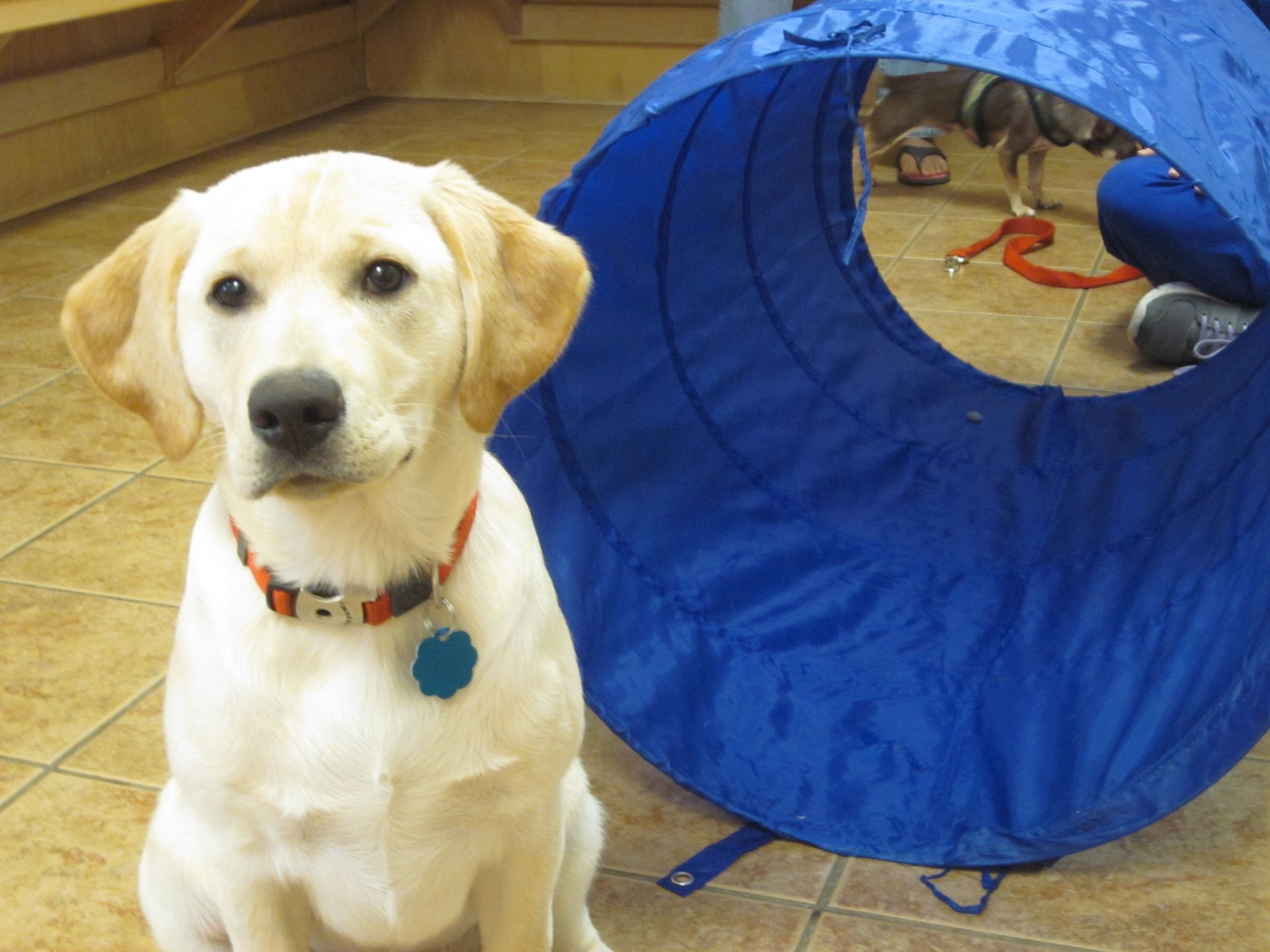Social Skills and Puppy Etiquette
Social Skills and Puppy Etiquette
1. Handling Exercises: Continue the previous handling exercises as directed.
A. Nail trims – Offer the puppy a treat and let it sniff the nail trimmers. While holding the puppy’s paw, touch the puppy’s toes gently with the trimmers, then treat. Carefully trim a nail tip – ask us how– then treat. This can be done one toe per session until the puppy is comfortable with the procedure.
B. Grooming – early desensitization to the process is important to make life easier for your puppy and the groomer. Take your puppy for brief sessions to get the puppy used to the process. At home, practice brushing your puppy.
C. Stand on a table – get your puppy accustomed to being on an elevated surface by placing it on a counter top or sturdy table and offering treats – make sure your puppy cannot fall off! Next time, repeat this, but also handle the feet, ears, and mouth as previously directed.
2. Feeding Exercises: Again, continue the feeding exercises as previously instructed.
A. Always ask the puppy to sit and/or wait while you set its food down – the puppy should only start eating when you give it a release word like “okay” or “alright.”
3. House training:
A. Puppies will not recognize other houses as “houses” and may have accidents inside while visiting. Even if your puppy is house trained, practice taking it to other places and continue using the umbilical cord method to prevent accidents.
B. Some breeds of dogs are particularly hard to house train and may take longer than others. Don’t give up! Be persistent and consistent!
4. Problem Behaviors:
A. Preventing separation anxiety: Do not make a big deal out of coming and leaving – this will make your new friend less anxious when you are gone. When leaving, crate the puppy by cheerfully offering it a treat to get into its crate, then offer a longer-lasting treat like a Kong with stuffing and treats or a puppy Nylabone to distract the puppy while you leave. Do not use toys or chews which the puppy may chew large pieces off of and swallow while not being supervised. When you come home, do not greet the puppy unless it is calm and quiet. Simply let it out of the crate, hook on the leash, and go for a walk.
B. Barking: Dogs bark to communicate and to release anxiety. Make sure your puppy is getting enough exercise. When your dog barks, tell it “alright” in a bright voice, then ask it to sit and offer a treat if the puppy is being quiet. This acknowledges that your dog has alerted you and that it doesn’t need to bark anymore.
5. Socialization – puppies have an ideal age for socialization between 8 and 12 weeks of age. During this time, it is important to expose your puppy to as many sights, sounds, scents, and places as possible. Always do this in a positive way and do not scare the puppy. Also be aware that your puppy is still not entirely protected from disease – make sure that you carry your puppy and keep its feet off the ground when visiting places like pet stores and parks where unvaccinated, sick dogs may have been.
A. Take your puppy with you in the car and encourage calm behavior during car rides.
B. Go to places like Lowes Home Improvement and Home Depot with your puppy to let the puppy meet people of all types. Bring treats and have strangers offer your puppy these treats to teach the puppy that people are good. Expose the puppy to all types of people – men, women, tall, short, people of different nationalities, people wearing hats, in wheelchairs, with walkers, etc.
C. Join a puppy class with a local trainer and introduce your puppy to other healthy, vaccinated puppies in a controlled environment.
D. Introduce your puppy to your friends’ dogs and encourage polite interactions.

Find Us
University Animal Hospital of Greensboro PLLC
1607-B West Friendly Avenue
Greensboro, North Carolina 27403
PHONE: 336-279-1003
universityanimhosp@bellsouth.net
Online Pharmacy: https://universityah.myvetstoreonline.pharmacy
Contact Us
Thank you for contacting us.
We will get back to you as soon as possible
We will get back to you as soon as possible
Oops, there was an error sending your message.
Please try again later
Please try again later


